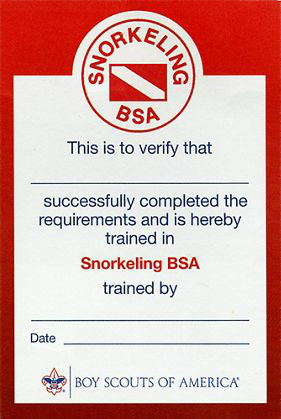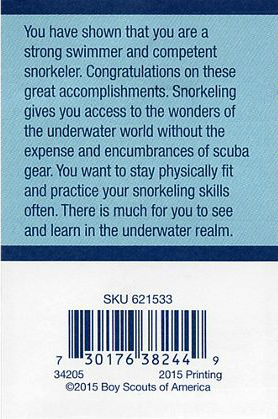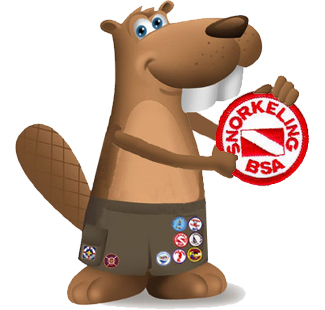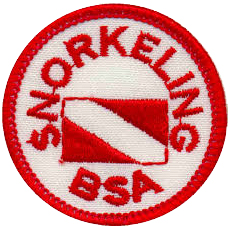Snorkeling BSA
The Snorkeling BSA requirements introduce the special skills, equipment, and safety precautions associated with snorkeling; encourage the development of aquatics skills that promote fitness and recreation; and provide a foundation for those who later will participate in more advanced underwater activity.
Any youth or adult who is registered with a troop, crew, or ship and completes the requirements is eligible for a patch and recognition card. The completed award application should be handled as directed by the council Training, Aquatics, or other committee.
All counselors must have current Safe Swim Defense training and council approval. Anyone currently trained as a BSA Aquatics Instructor or certified as a snorkeling instructor by a BSA recognized scuba training agency may serve as a counselor for the Snorkeling BSA award. Councils may also approve counselors who have been trained and are supervised by those with the previously listed credentials.
Instruction must be conducted in clear, confined water with a maximum depth of 12 feet. A swimming pool is recommended. Snorkeling BSA is ideally suited to winter programs using indoor pools. Three 45-minute sessions are recommended for instruction, practice, and completion of requirements.
All aspects of Safe Swim Defense apply during instruction, practice, and all other snorkeling activities. Snorkeling in open water requires each participant to first demonstrate knowledge and skills equivalent to the Snorkeling BSA requirements.
Aquatics Supervision: A Leader’s Guide to Youth Swimming and Boating Activities, No. 34346, provides reference material for Snorkeling BSA instruction. Scuba training agencies, equipment manufacturers, and others occasionally publish references available online and through bookstores and dive shops. Although few dedicated snorkeling texts are available, instruction manuals for scuba diving contain pertinent information.
All requirements must be completed as stated on the application form. The counselor may not omit, vary, or add requirements. The skill requirements are listed in an order appropriate for instruction.
The second requirement considers the time-honored and time-proven principle of the buddy system. Snorkelers must use the buddy system at all times. Before beginning the activity, each person helps their buddy fit and check equipment. The principle of the buddy system is that two people can enjoy an aquatics activity together while each provides a critical margin of safety for the other. Each buddy must constantly be aware of the condition and circumstances of their buddy, and must always be prepared to call for aid or give immediate assistance if needed.
Swimsuit / swim trunks emblem – The Snorkeling BSA patch is NOT worn on the uniform or the sash; it is worn on the left side of the swimsuit / swim trunks
Snorkeling BSA Award
Upon successful completion, participants earn the Snorkeling BSA patch along with their achievement card. Completion indicates the individual has experienced a valuable introduction to snorkeling.


Snorkeling BSA Requirements

Snorkeling BSA – Forms, Links, and Resources
Aquatics Supervision – Leader's Guide – the Snorkeling BSA award application is contained in the appendix.

